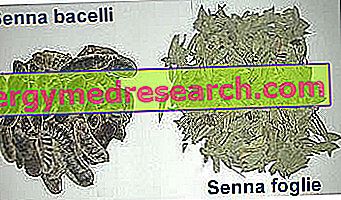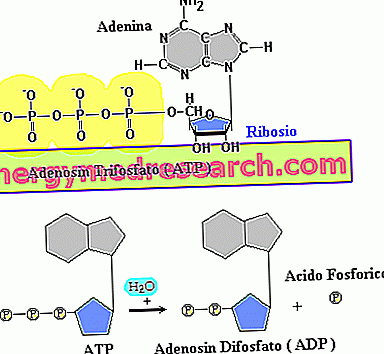What is senna
Senna is a laxative drug of vegetable origin, composed of the leaves and / or dried fruits (pods) of one of the following species, or a mixture of both:
- Cassia acutifolia Del. (= Cassia Senna L.)
- Cassia angustifolia Vahl (= senna of Tinnevelly or senna Indian)
 |
Brief Botany DescriptionSmall erect shrubs (1-2 m) originating in East Africa and India. Pale green stem, with long erect branches, compound leaves, paripinnate (4-8 pairs of leaflets), alternate, and yellow flowers gathered in terminal clusters. The fruit (or pod) is a legume that ends with a dot, a residue from the stem.  |
Natural laxative
Of all the anthraquinone laxatives, the senna is certainly the most used (because of low cost) and also the most studied. Like other drugs characterized by the generous presence of these active ingredients (aloe juice, cascara, frangola, rhubarb), senna is recommended for the treatment of constipation.
Considering the fairly strong laxative effect - not as bland as that of the buckthorn or cascara, nor so pronounced as that of aloe juice - the senna, in particular, is widely recommended for short-term treatments (one or two weeks), in case of acute constipation or before an endoscopic examination such as colonoscopy.
Sennosides - How they act
The anthraquinone active ingredients that characterize the senna are called sennosides A and B; in fact these are diantronic glycosides, contained in percentages around 1.5% -3% in the leaves and 2.5% in the fruits (where they are concentrated at the level of the pericarp).
In the phytocomplex we also find small amounts of sennosides C and D, monomeric glycosides and free anthraquinones (aloe-emodin, chrysofanol, reina). Other constituents include mucilage, flavonoids, polysaccharides, acids and mineral substances.
Sennosides, in themselves inactive, behave in fact like prodrugs; in fact, they acquire a laxative action only after they have been metabolized by the intestinal bacterial flora, which releases the aglycones (non-sugary parts of the glycosides) and transforms them into the reinantrone and rein anthrons, through a series of intermediate steps.
The reina, which represents the characteristic active principle of the senna, is scarcely absorbable and acts in situ enhancing the secretion of water and electrolytes in the intestinal lumen, inhibiting its reabsorption and increasing the enteric content, which in fact represents a great stimulus for the increase of motility of the large intestine. For this particular mechanism of action, the senna belongs to the category of stimulating laxatives, also called irritants or contact.
Mode of use
Senna is available in numerous pharmaceutical preparations (tablets, capsules, syrups, fluid extracts, infusions and macerates), often in association with other natural substances with laxative, choleretic / cholagogue, spasmolytic (to mitigate its colic effects) or corrective taste and color.
Regarding the dosage, depending on the pharmaceutical form, we generally recommend 2 ml of fluid extract, 8 ml of syrup or an infusion prepared with 0.5-2 g of leaves or fruits, better if standardized in sennosides (which fit crystalline are more stable, reliable and safe than the various preparations obtained from the crude drug).
The infusion should not be performed with boiling water; on the contrary, it is often recommended to obtain the tea for cold maceration (let the drug stand in water at room temperature for at least 10-12 hours, then filter and take for os). In this way, in fact, the preparation contains more sennosides and less resinous material (sennanigrine), considered responsible for abdominal cramps.
The laxative effect of senna typically occurs eight to twelve hours after oral administration. The fruit of the senna, compared to the leaves, has a milder laxative action.
Side effects and contraindications
The abuse of senna-based laxatives, understood as long-term perpetuated use, can induce colonic melanosis, electrolyte imbalance, addiction and psychological dependence, while the intake of excessive doses is typically associated with abdominal disorders of various kinds (cramps, flatulence, meteorism) and congestion of hemorrhoids. Potassium loss is to be taken into particular consideration especially in the case of concomitant intake of licorice, corticosteroids, thiazide diuretics or antiarrhythmic drugs.
Senna intake produces urinary discoloration; in fact, following its use, the urine becomes yellowish brown, if acidic, or red if alkaline. Also the feces, for the presence of anthraquinones, can assume a yellow-orange color.
Senna is contraindicated in pregnancy and lactation, in cases of intestinal obstruction, rectal stenosis, spastic constipation, ulcerative colitis, menstrual period, appendicitis, diverticulitis, hemorrhoids, proctitis, in cases of abdominal pain of unknown origin and in children.



